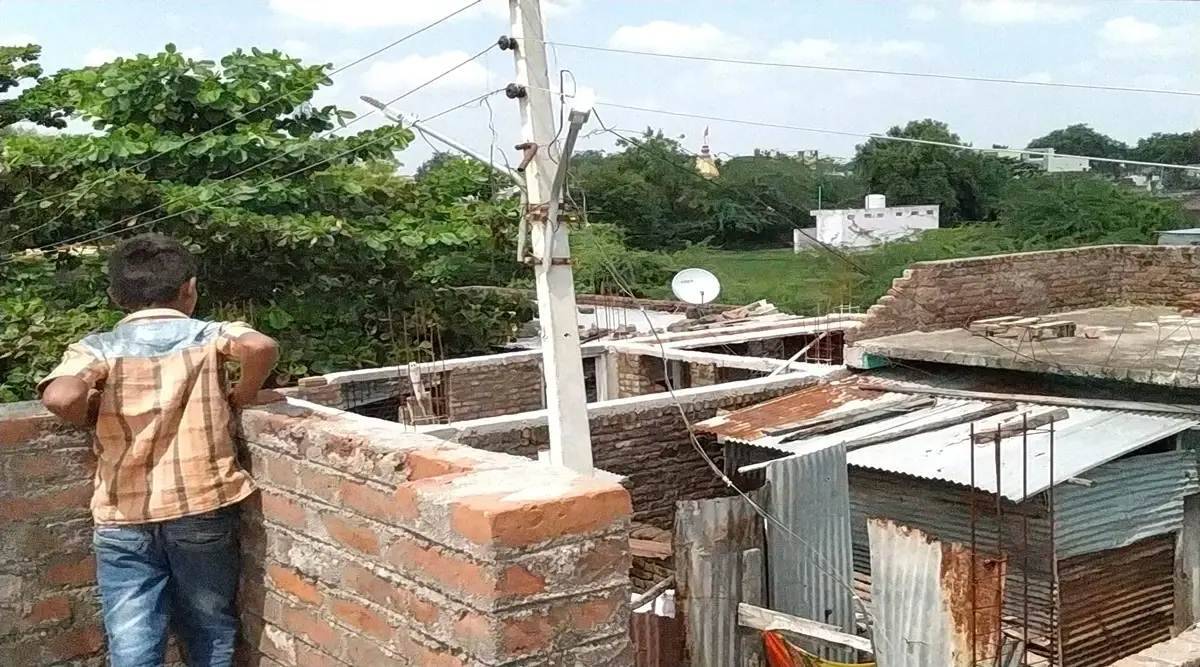 The Rs 13,000-crore tranche is over and above the outlay of Rs 20,000 crore provided for PMAY-G in the Union Budget 2022-23. (Representational/File)
The Rs 13,000-crore tranche is over and above the outlay of Rs 20,000 crore provided for PMAY-G in the Union Budget 2022-23. (Representational/File)MONTHS AFTER the Union Ministry of Rural Development (MoRD) flagged shortage of funds for implementation of the Pradhan Mantri Awas Yojna-Gramin (PMAY-G), the Union Ministry of Finance has approved an advance of Rs 13,000 crore for the rural housing scheme from the Contingency Fund of India, it is learnt.
The Rs 13,000-crore tranche is over and above the outlay of Rs 20,000 crore provided for PMAY-G in the Union Budget 2022-23.
The government has set a target of building 52.78 lakh houses under the scheme in 2022-23.
In the first seven months (April-October 2022), the Rural Development Ministry has utilised Rs 16,785 crore – about 84 per cent – of the Rs 20,000 crore under the PMAY-G scheme. The ministry’s other schemes like PMGSY (Pradhan Mantri Gram Sadak Yojna), which has almost equal budgetary allocation (Rs 19,000 crore) has been able to utilise only 40 per cent, and the National Rural Livelihood Mission (NRLM) only 25 per cent in the same period. Under NREGS, a demand driven rural job guarantee scheme, 74 per cent of the allocated funds have been utilised in the first seven months.
With several states demanding extra funds for construction of rural houses, the MoRD had approached the Ministry of Finance way back in June for additional allocation. On June 8, 2022, Nagendra Nath Sinha, Secretary, Rural Development, wrote to Finance Secretary TV Somanathan and highlighted that the budgetary allocation of Rs 20,000 crore was “not sufficient” to meet the “expected” demand of the states and Union Territories (UTs) to construct 52.78 lakh rural houses under the PMAY-G during the year, The Indian Express has learnt. Sinha requested him to provide an additional Rs 28,422 crore.
Under the PMAY-G, a financial assistance of Rs 1.20 lakh in plain areas and Rs 1.30 lakh in hilly states is provided to a beneficiary. As per the scheme’s guidelines, the financial burden of implementation of the scheme is shared by the Centre and tate in a ratio of 60:40 in plain areas and 90:10 for hilly states (special category states which includes 8 North Eastern States, Himachal Pradesh, Uttarakhand and J&K). In the UTs, including Ladakh, the Centre bears 100 per cent of the expenditure on the implementation of the rural housing scheme.
The present NDA government, in its first tenure, had restructured the erstwhile rural housing scheme and launched the PMAY-G with effect from April 1, 2016, with an aim of providing “Housing for All” by 2022. A target of construction of 2.95 crore PMAY-G houses by March 2024 has been set, of which 2.07 crore rural houses have been built.
Top spender in rural development
The PM Awas Yojana has been the top spender —better than even the job guarantee scheme, NREGS — in the rural development ministry in the first seven months this year. It sought extra funds in the first quarter itself, and has now received more than two-third of the money allocated when the Budget was presented.
“In fact, the target of construction of 2.02 crore rural houses under the PMAY-G till August 15, 2022 has been achieved,” said a source.
To meet the March 2024 target, 52.78 lakh houses in 2022-23 and 57.34 lakh houses in financial year 2023-24 must be constructed. As per the MoRD estimate, Central share of Rs 48,422 crore would be required to complete the target of 52.78 lakh houses in 2022-23. However, only Rs 20,000 crore was allocated in Budget 2022-23.
The Budget documents show that out of Rs 20,000 crore, only Rs 15,999.99 crore was allocated for the scheme component, while Rs 4,000 crore was set aside for interest payment to NABARD in the form of extra budgetary resources.
Sinha wrote again to Somanathan on October 18, 2022 and highlighted that the budgetary allocation of the PMAY-G has always been “much lower than the required funds every year” and requested him to provide at least Rs 15,000 crore before the next Supplementary Demands for Grants so that the Central share can be released to the states. The Ministry of Finance finally informed the MoRD about approval of an advance of Rs 13,000 crore from the Contingency Fund of India on October 31, 2022.